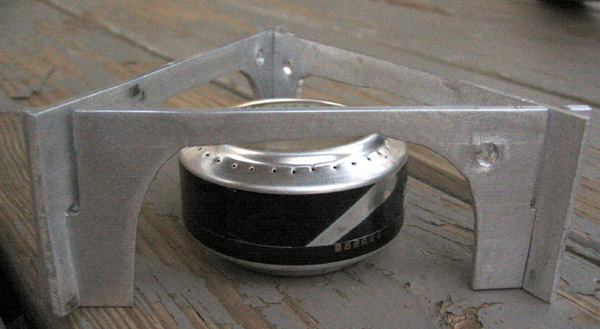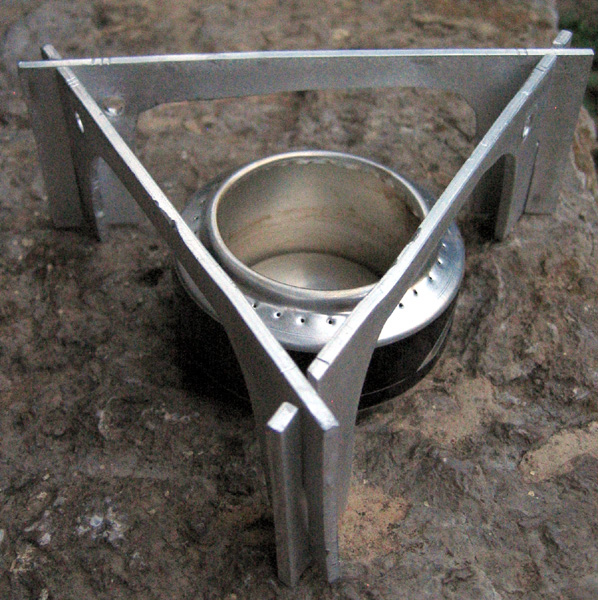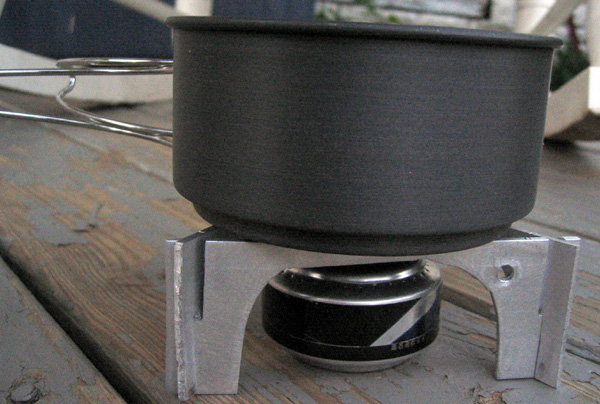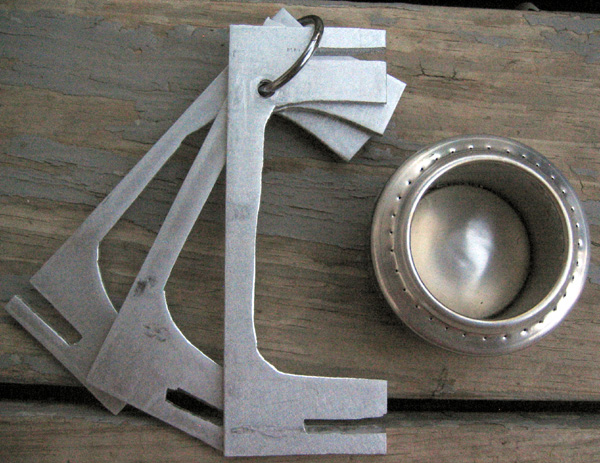This time we started with a 2-inch aluminum blank and focused on building a pot stand that would pack well, was very light but sturdy and that would work on less than perfectly level surfaces. After several failed attempts we came up with this:



It is much sturdier, less precarious to balance, works with a wide range of pots and is pretty light. We tested this one on many different surfaces, and it seemed to work fine. If you are cooking on soil you can drive the corners down until it is level, or if on rock, you can either build up, or we left enough room in the joints that you can sort of adjust the top to make it level. This holder felt much safer when we used it, since the wide base eliminated most “balancing” issues.

It was easy to construct and you can buy enough material to make two of them at Lowes/Home Depot type stores for $7.00. All you need is a 2-inch aluminum blank a drill and a jig saw with a metal cutting blade and some patience. The real trick is in the layout, making sure that all of you slits are cut going the right direction, and then taking your time to make the angle cuts for the locking mechanism.

As you can see this one packs up nicely. We rounded the corners and sanded it so it would not snag my pack and so it would look more finished. The main problem with this design is that it does not block the wind effectively. I like this design so much that I opted to get around this by carrying a 6″ X 12″ piece of heavy duty aluminum foil to use as a screen. I just fold it and tuck the bottom under the potholder, it seems to work just fine.
Just like the alcohol stove, I get an inordinate amount of pride from using this setup because I made it. There is something about looking at this and remembering when it was all just a blank piece of metal, a soda can and a beer can, that was transformed by an evenings work. It ain’t rocket science but it gives me a warm feeling inside before I ever light it up to cook my dinner.
Could you just make a cutout on one side only and use the other side full width sides as a wind screen?
That works for dirt or smooth surfaces, but the arches were to make it easier to set up on uneven rocks, etc. I ended up using it this way with a piece of thick aluminum foil I could reuse to direct the wind.